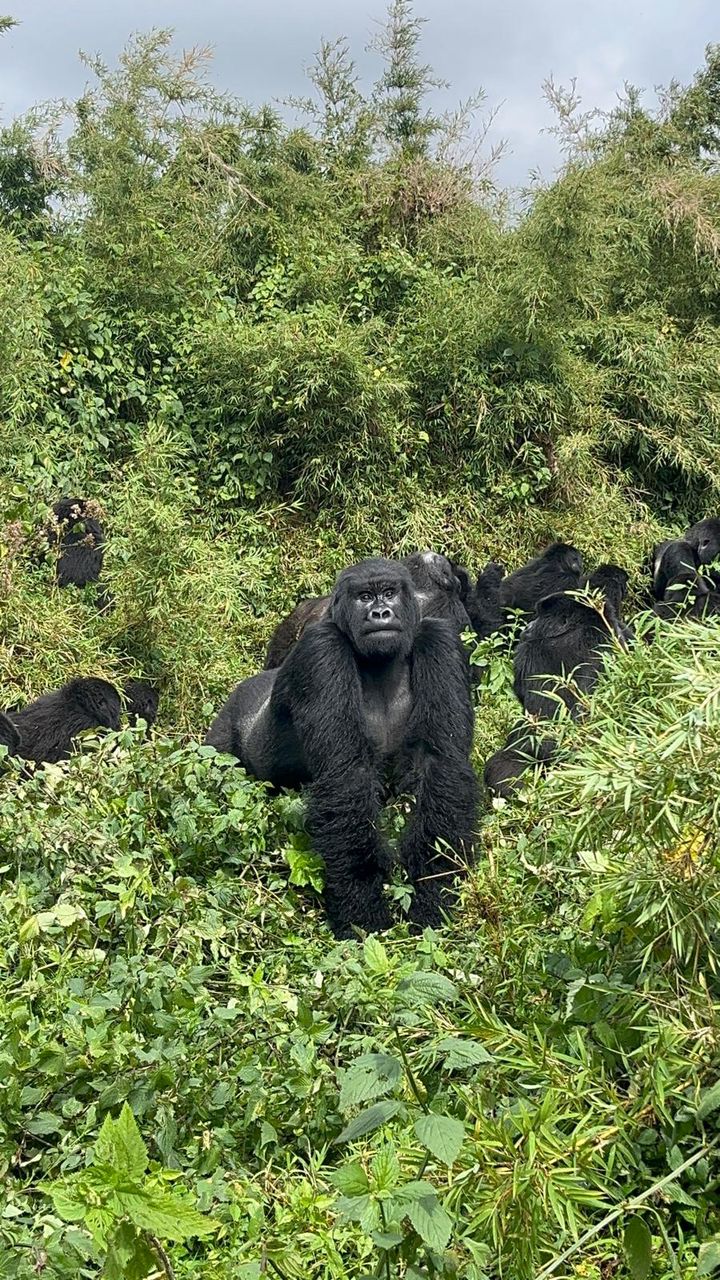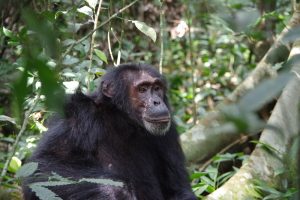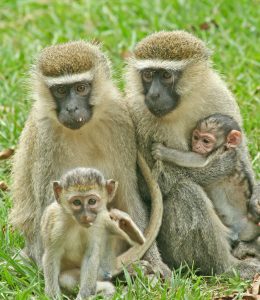Combined Kenya and Uganda Safari
Embarking on an East African safari is a dream for many, and combining the vibrant landscapes and diverse wildlife of Kenya with the unparalleled primate encounters of Uganda offers an truly comprehensive and unforgettable experience. This detailed guide aims to answer all your burning questions about planning a combined trip to these two magnificent countries, ensuring your journey is as seamless and enriching as possible. From thrilling wildlife safaris to intimate gorilla trekking, and from cultural immersions to practical travel tips, we’ve got you covered. Combined Kenya and Uganda Safari
Why Choose a Combined Kenya and Uganda Safari?
Absolutely. A combined safari provides a unique opportunity to witness the classic savannah wildlife spectacles of Kenya, renowned for its vast plains and the iconic Great Migration, alongside Uganda’s lush rainforests, which are home to the endangered mountain gorillas and a remarkable array of primates. While Kenya is the quintessential “Big Five” destination, Uganda’s true crown jewel lies in its primate diversity. This dual-nation approach allows you to experience the best of both worlds, offering a depth and variety of wildlife encounters that a single-country trip simply cannot match. You seamlessly transition from open plains teeming with herds of wildebeest and zebras to dense forests where you come face-to-face with humanity’s closest relatives, creating a safari narrative that is rich in contrast and exhilarating in its scope.
What are the key differences in wildlife and safari experiences between Kenya and Uganda?
Kenya is globally celebrated for its vast savannahs, offering unparalleled opportunities for classic game drives. Destinations like the Maasai Mara National Reserve are synonymous with the annual Wildebeest Migration, a spectacle of millions of animals moving across the plains. Here, you’re almost guaranteed to see the “Big Five” (lion, leopard, elephant, rhino, and buffalo) and witness predator-prey interactions on a grand scale. The safari experience in Kenya often involves more developed infrastructure, including a wider range of luxury lodges and tented camps.
Uganda, on the other hand, is known as the “Pearl of Africa” for its incredible biodiversity, particularly its primates. While it also offers game drives in parks like Queen Elizabeth National Park and Murchison Falls National Park where you can spot the Big Five, its true allure lies in the immersive experience of gorilla trekking in Bwindi Impenetrable National Park or Mgahinga Gorilla National Park. This is a physically demanding yet profoundly rewarding encounter with endangered mountain gorillas in their natural rainforest habitat. Uganda also boasts Kibale Forest National Park, often referred to as the “Primate Capital of the World,” offering exceptional chimpanzee trekking opportunities. The safari experience in Uganda tends to be more adventurous, often involving trekking through dense forests, and while accommodations are comfortable, the infrastructure is generally less developed than Kenya’s, offering a more intimate and less commercialized wildlife experience.
What is the best time of year to combine a Kenya and Uganda safari for optimal wildlife viewing?
The dry seasons in both Kenya and Uganda generally offer the best conditions for a combined safari. This typically falls between June to September and December to February. During these months, the vegetation is sparser, making wildlife easier to spot as animals congregate around fewer water sources. For Kenya, the Great Migration in the Maasai Mara usually occurs between July and October, making this a prime time. For Uganda, the dry months are ideal for gorilla and chimpanzee trekking, as the trails are less muddy and slippery. However, it’s important to note that gorilla trekking takes place in rainforests, so occasional rain showers can still be expected year-round. Traveling in the “shoulder seasons” (e.g., March-May or October-November) might offer lower prices and fewer crowds, though with a higher chance of rain.
How much does a combined Kenya and Uganda safari typically cost, and what factors influence the price?
The cost of a combined Kenya and Uganda safari varies significantly depending on several factors, including:
- Safari Style: Budget, mid-range, or luxury.
- Duration: Longer safaris naturally cost more.
- Activities: Gorilla trekking permits ($800 per person in Uganda) and chimpanzee trekking permits ($250 per person in Uganda) are significant expenses. Hot air balloon safaris in Kenya ($450 per person) also add to the cost.
- Accommodation: Lodges and tented camps range from basic to ultra-luxury.
- Transportation: Flying between parks is more expensive than driving, but saves time.
- Group Size: Traveling in a group can often reduce per-person costs.
- Time of Year: Peak season (dry season) typically has higher prices.
As a general guideline:
- Budget Safaris: Expect to pay around $150-$400 per person per day in Kenya and $300-$500 per person per day in Uganda.
- Mid-Range Safaris: Prices can range from $350-$600 per person per day in Kenya and $450-$700 per person per day in Uganda.
- Luxury Safaris: Starting from $750-$1000+ per person per day in Kenya and $700-$1000+ per person per day in Uganda.
These figures are estimates and do not include international flights. Always get detailed quotes from a tour operator
What visa and entry requirements are necessary for travelers visiting both Kenya and Uganda?
For citizens of most countries, a visa is required to enter both Kenya and Uganda. The most convenient option for a combined East African trip is often the East African Tourist Visa (EATV). This single visa allows entry into Kenya, Uganda, and Rwanda, simplifying border crossings and saving on individual visa fees. It’s generally valid for 90 days and allows multiple entries within these three countries.
How to apply: The EATV can be applied for online through the immigration portals of Kenya, Uganda, or Rwanda. It’s highly recommended to apply well in advance of your travel dates.
Passport Validity: Ensure your passport is valid for at least six months beyond your intended departure date and has sufficient blank pages for stamps.
Yellow Fever Vaccination: A Yellow Fever vaccination certificate is mandatory for entry into both Kenya and Uganda, especially if you are arriving from or transiting through a country with a risk of Yellow Fever transmission. Carry your original certificate with you.
Other Vaccinations: Consult your doctor about other recommended vaccinations, such as Hepatitis A & B, Typhoid, Tetanus, Diphtheria, Polio, and Rabies.
Malaria Prophylaxis: Both countries are malaria-risk areas. Discuss appropriate anti-malarial medication with your doctor.
COVID-19 Requirements: While many restrictions have been lifted, it’s crucial to check the latest COVID-19 entry requirements for both countries closer to your travel date, as these can change.
Are there reputable tour operators specializing in combined Kenya and Uganda safaris?
numerous reputable tour operators specialize in combined Kenya and Uganda safaris. Many operators based in either Kenya or Uganda have established partnerships to facilitate seamless cross-border itineraries. When choosing an operator, look for:
- Experience and Expertise: Operators with a long history and in-depth knowledge of both countries.
- Customization: The ability to tailor itineraries to your interests, budget, and travel style.
- Safety and Reliability: Ensure they adhere to strict safety protocols and have well-maintained vehicles and experienced guides.
- Reviews and Testimonials: Check online reviews on platforms like TripAdvisor.
- Accreditation: Look for affiliations with recognized tourism bodies.
- Sustainable Practices: Choose operators committed to responsible tourism and supporting local communities.
What are the must-see national parks and attractions to include in a combined Kenya and Uganda itinerary?
A truly comprehensive itinerary should balance classic wildlife viewing with unique primate encounters.
In Kenya:
- Maasai Mara National Reserve: The quintessential Kenyan safari destination, famous for the Great Migration (July-October), abundant predators, and vast savannahs. It offers exceptional opportunities to see the Big Five.
- Amboseli National Park: Known for its large herds of elephants and breathtaking views of Mount Kilimanjaro, often serving as a stunning backdrop for wildlife photography.
- Lake Nakuru National Park: Renowned for its massive flocks of flamingos (though numbers can vary) and as a rhino sanctuary, home to both black and white rhinos.
- Samburu National Reserve: Located in the arid northern Kenya, this park offers unique “Northern Five” species (Grevy’s zebra, reticulated giraffe, Beisa oryx, Somali ostrich, and gerenuk), along with elephants and predators.
In Uganda:
Bwindi Impenetrable National Park: The absolute highlight of any Uganda trip, offering unparalleled mountain gorilla trekking experiences. Home to over half of the world’s remaining mountain gorillas.
Kibale Forest National Park: The “Primate Capital of the World,” where you can embark on incredible chimpanzee trekking adventures and encounter numerous other primate species.
Queen Elizabeth National Park: Uganda’s most popular savannah park, known for its diverse habitats, including the famous tree-climbing lions in the Ishasha sector, vast herds of elephants and buffalo, and fantastic boat safaris on the Kazinga Channel, teeming with hippos and birds.
Murchison Falls National Park: Uganda’s largest national park, characterized by the mighty Nile River crashing through a narrow gorge, creating Murchison Falls. Offers excellent game drives, boat safaris, and chimpanzee trekking in Budongo Forest.
How can I combine a classic Kenyan safari with a unique Ugandan gorilla trekking experience?
Combining these two iconic experiences is very popular and forms the backbone of many combined Kenya-Uganda itineraries.
Logistics: The most efficient way to connect these destinations is often by flight. You would typically fly from Nairobi (Kenya) to Entebbe (Uganda). From Entebbe, internal flights or well-organized road transfers (though roads can be long) connect you to Bwindi or Kibale. Some itineraries might involve flying from the Maasai Mara directly to Kisumu (Kenya) and then crossing the border into Uganda, followed by a transfer to a domestic airport for a flight to Bwindi. Another option is to fly from Maasai Mara to Kigali, Rwanda, and then drive to Bwindi (which is often a shorter and more comfortable drive than from Entebbe).
Typical Itinerary Flow: A common flow involves starting with a few days in Kenya (e.g., Maasai Mara, perhaps Amboseli or Lake Nakuru) for classic game drives and the Great Migration (if seasonal). Afterward, you would travel to Uganda for the primate trekking experiences (gorillas in Bwindi, chimpanzees in Kibale), potentially adding a savannah safari in Queen Elizabeth National Park. This sequence allows for a gradual progression from open plains to dense forests, diversifying your wildlife encounters.
What cultural experiences can be integrated into a Kenya and Uganda safari?
Beyond wildlife, both Kenya and Uganda offer rich cultural experiences that can deepen your understanding of East Africa.
Kenya:
Maasai Village Visits: Interact with the iconic Maasai people near the Maasai Mara, learning about their traditions, dances, and semi-nomadic lifestyle. Always ensure these visits are authentic and respectful, ideally organized through community-based tourism initiatives.
Bomas of Kenya: In Nairobi, this cultural center showcases traditional homesteads and performances from various Kenyan tribes.
Lamu Old Town: A UNESCO World Heritage site on Kenya’s coast, offering a glimpse into Swahili culture and history. (This would require an extension beyond the traditional safari circuit).
Uganda:
Batwa Cultural Experience: Near Bwindi Impenetrable National Park, you can participate in a guided tour with the Batwa Pygmies, the indigenous forest dwellers, learning about their traditional way of life, hunting techniques, and cultural practices before they were relocated from the park. This is often a highlight for visitors.
Ndere Cultural Centre (Kampala): Features vibrant performances of traditional Ugandan music, dance, and storytelling from various ethnic groups.
Kasubi Royal Tombs (Kampala): A UNESCO World Heritage site and burial ground for Buganda kings, offering insights into the Buganda Kingdom’s history and traditions.
Community Walks: Many lodges in and around national parks offer guided walks to local villages, providing opportunities to meet residents, visit schools, and learn about local crafts and daily life.
Source of the Nile (Jinja): While more a natural attraction, Jinja offers opportunities to interact with local communities and experience the bustling town life.
What essential items should I pack for a combined safari in Kenya and Uganda? Packing smart is crucial for a comfortable and enjoyable safari.
Clothing:
Lightweight, breathable clothing in neutral colors (khaki, olive green, brown) to blend in with the environment and deter insects.
Long-sleeved shirts and long pants for protection against sun, insects, and thorns, especially for gorilla trekking.
A warm fleece or jacket for chilly mornings, evenings, and higher altitudes.
Rain gear (waterproof jacket and pants) is essential for gorilla trekking in Uganda.
Comfortable walking shoes or hiking boots (waterproof for trekking).
Sandals or flip-flops for relaxing at the lodge.
Swimsuit (if your lodge has a pool).
Essentials:
Wide-brimmed hat and sunglasses for sun protection.
High-factor sunscreen and lip balm.
Insect repellent with DEET (essential!).
Personal toiletries and any prescription medications.
Small first-aid kit (pain relievers, antiseptic wipes, band-aids, anti-diarrhea medication).
Hand sanitizer.
Gear:
Binoculars (absolutely essential for wildlife viewing!).
Camera with extra batteries and memory cards (and a telephoto lens if you have one).
Power bank for charging devices.
Universal travel adapter (Kenya and Uganda use Type G and Type E/F sockets respectively).
Daypack for carrying essentials during game drives and treks.
Refillable water bottle.
Documents:
Passport (valid for at least 6 months beyond your trip).
Visas (EATV recommended).
Yellow Fever vaccination certificate.
Travel insurance documents.
Copies of all important documents (kept separately).
Sufficient cash (USD is widely accepted, especially for permits and tips, but local currency is useful for smaller purchases).
What health and safety precautions should I take before and during my trip to Kenya and Uganda?
Medical Consultation: Visit your doctor or a travel clinic well in advance (at least 6-8 weeks) to discuss necessary vaccinations (Yellow Fever, Hepatitis A/B, Typhoid, etc.) and malaria prophylaxis.
Malaria Prevention: Take prescribed anti-malarial medication diligently. Use insect repellent, sleep under mosquito nets (often provided by lodges), and wear long sleeves and pants in the evenings.
Food and Water Safety: Drink only bottled or purified water. Avoid ice in drinks unless you are sure it’s made from safe water. Be cautious with street food; stick to reputable restaurants and freshly cooked meals.
Sun Protection: The East African sun is strong. Use sunscreen, wear hats, and seek shade during the hottest parts of the day.
Wildlife Safety: Always follow your guide’s instructions during game drives and treks. Maintain a safe distance from animals. Never approach or feed wild animals.
Personal Safety: In urban areas like Nairobi and Kampala, be aware of your surroundings, especially at night. Avoid displaying valuable items. Use reputable taxis or ride-hailing apps. In rural areas, incidents are rare, but it’s always wise to inform your lodge or guide of your plans.
Travel Insurance: Comprehensive travel insurance that covers medical emergencies, evacuation, trip cancellation, and lost luggage is highly recommended. Ensure it covers adventure activities like gorilla trekking if you plan to do them.
Altitude Sickness: While most safari areas are not at high altitudes, some areas, especially near the Rwenzori Mountains in Uganda, can be. If you plan any strenuous hikes, be aware of symptoms and acclimatize gradually.
How do I handle money and currency during a combined Kenya and Uganda safari?
Currencies: The local currency in Kenya is the Kenyan Shilling (KES), and in Uganda, it’s the Ugandan Shilling (UGX). US Dollars (USD) are widely accepted for major payments (safari costs, permits, high-end lodges, tips).
Cash vs. Card: While major lodges and tour operators accept credit cards, it’s always advisable to carry a good amount of USD cash (small denominations are very useful for tips, local purchases, and visa fees if not pre-paid). ATMs are available in major towns and cities but can be scarce in remote safari areas.
Exchange Rates: Exchange currency at official banks or licensed forex bureaus for the best rates. Avoid exchanging money with touts on the street.
Tipping: Tipping is customary for guides, porters (especially for trekking), and lodge staff. Research recommended tipping guidelines for each country.
Budgeting: Factor in costs for souvenirs, drinks, personal expenses, and tips when budgeting your trip.
What are the common modes of transport between and within Kenya and Uganda for tourists?
International Flights: The primary entry points are Jomo Kenyatta International Airport (NBO) in Nairobi, Kenya, and Entebbe International Airport (EBB) near Kampala, Uganda. Direct flights often connect these two cities.
Domestic Flights: For time efficiency, flying between major parks or regions within each country is recommended. For example, from Nairobi to Maasai Mara, or from Entebbe to Bwindi or Queen Elizabeth National Park. Safari flights often use smaller aircraft.
Road Transfers: For shorter distances or to experience the local landscape, road transfers in comfortable 4×4 safari vehicles are common. Be prepared for potentially long and bumpy rides, especially in Uganda, where roads can be less developed. Your tour operator will arrange these.
Border Crossings: The busiest land border crossing between Kenya and Uganda is at Busia or Malaba. While possible, crossing by public transport can be time-consuming and sometimes chaotic. If on an organized safari, your tour operator will handle the logistics seamlessly, guiding you through immigration and customs. Ensure you have all necessary documents ready.
Are combined safaris suitable for families or solo travelers?
Family Safaris: Absolutely! Many tour operators offer tailored family safaris. Kenya, with its broader range of activities and more developed infrastructure, is often a great starting point for families with younger children. Uganda offers more adventurous options, which might be better suited for families with older children or teenagers (often, a minimum age of 15 is required for gorilla trekking). Family-friendly lodges often have pools, kids’ clubs, and special activities. Packing smart with entertainment for kids during drives is key.
Solo Travel: East Africa is increasingly popular for solo travelers. Major tourist areas are generally safe, and reputable tour operators prioritize client safety. Solo travelers can join group safaris which can be more cost-effective or opt for private tours. Lodges often provide opportunities to connect with other travelers. Staying connected with a local SIM card, trusting your instincts, and utilizing reliable transport are important tips for solo adventurers.
How does sustainable tourism play a role in combined Kenya and Uganda safaris, and why is it important?
Sustainable tourism is vital for preserving the incredible natural heritage and supporting the local communities in Kenya and Uganda. It’s about minimizing negative impacts while maximizing positive ones.
- Conservation: Both countries actively promote conservation efforts. Gorilla trekking, for example, directly contributes to the protection of mountain gorillas through permit fees, which fund anti-poaching efforts and habitat preservation. Many conservancies in Kenya are community-owned, where tourism revenue directly benefits local people and incentivizes them to protect wildlife.
- Community Empowerment: Responsible tourism channels economic benefits directly to local communities through employment (guides, lodge staff, artisans), purchasing local goods, and supporting community projects (schools, health clinics). Choosing operators committed to fair wages and community engagement helps.
- Environmental Responsibility: This includes minimizing waste, conserving water and energy, respecting wildlife space, and adhering to park regulations. Many lodges and camps are eco-friendly, using solar power, recycling, and sourcing local produce.
- Visitor Management: Limiting the number of daily gorilla permits and controlling vehicle numbers in national parks helps reduce pressure on wildlife and ecosystems, ensuring a high-quality, intimate experience for visitors while preserving resources for future generations.
When booking your safari, inquire about your tour operator’s commitment to sustainable tourism. By choosing responsible tourism, you contribute directly to the long-term viability of these incredible destinations and the well-being of their inhabitants, making your adventure even more meaningful.
A combined Kenya and Uganda safari truly offers an unparalleled African adventure, weaving together iconic wildlife encounters, breathtaking landscapes, and profound cultural experiences. By understanding the logistics, preparing adequately, and choosing responsible tourism options, you are set to embark on a journey that will leave an indelible mark on your soul.




